Posted by Maris on 7th May 2024
Cultural Customs Only Scots Will Understand
The Scottish people are very sentimental. Scotland's legacy is woven into the cultural fabric through rituals that are still followed today, leaving an indelible mark on society. Here we highlight several important quirks that are unique to Scots.
Burns Night
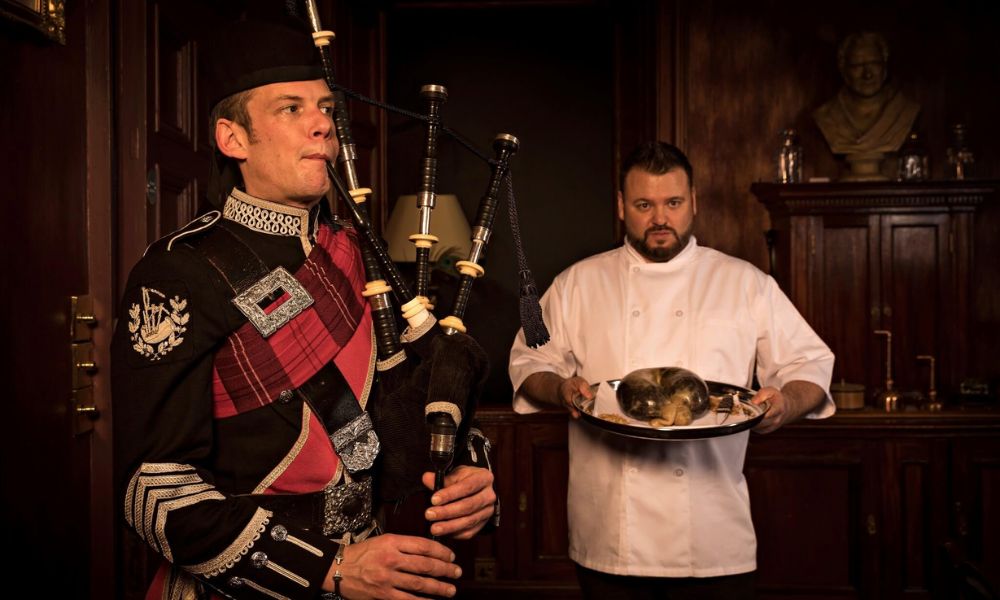
Burns Night is a yearly celebration that is steeped in history and wrapped in tartan. This joyous occasion honors Scotland's national poet, Robert Burns, and falls on or around his birthday, January 25. People of all ages honor Burns throughout Scotland by performing his works, participating in ceilidh dances, and indulging in traditional foods like shortbread, cranachan, haggis, neeps and tatties, and cock-a-leekie soup. Indeed, whisky plays a part!
Kilts
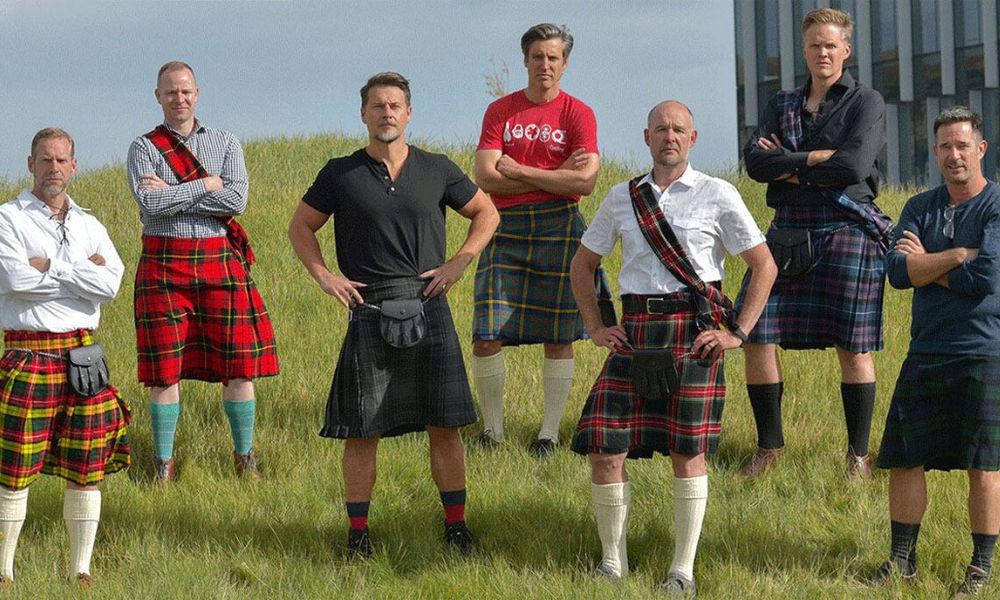
Kilts and Scotland are a really powerful combination. The kilt, which is Scotland's national garment, originated as a massive wad of bulky material in the Highlands in the sixteenth century. Back then, tartan was employed to denote the local natural dyes rather than to identify clans. A belt, sporran (a purse that hangs at the waist), kilt pin, kilt socks, and a sgian-dubh (knife) in the sock are now required pieces of full kilt wear. Traditionally, family or clan tartan kilts are worn for formal events like as graduations, fancy parties, weddings, and funerals. For informal occasions such as rugby matches and football matches, they can also be worn with a T-shirt.

Address To A Haggis
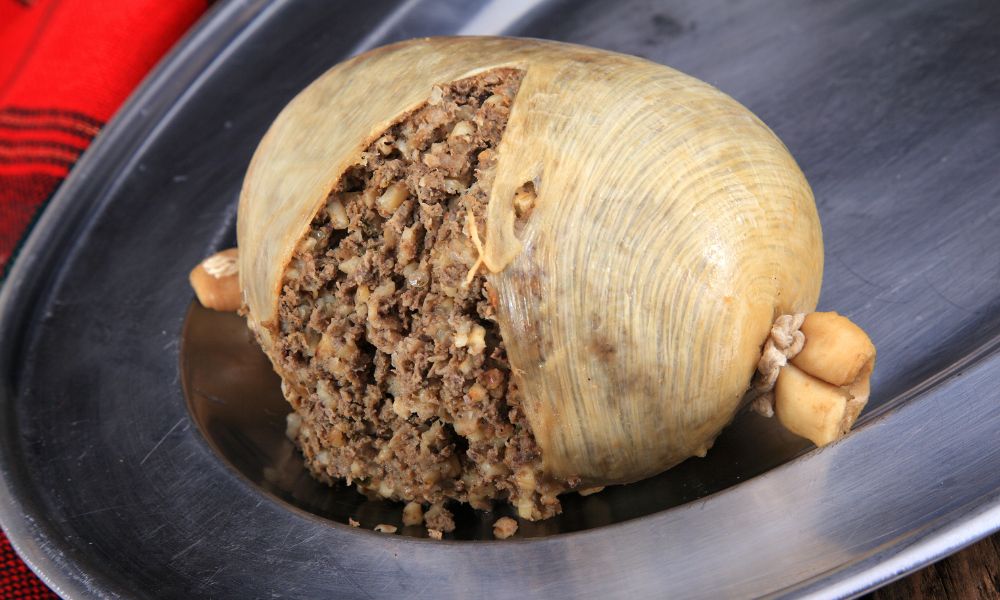
It is well known that haggis is Scotland's national cuisine. It is a mixture of minced sheep pluck (sheep heart, liver, and lungs), oats, onion, and salt, served with neeps (turnips) and tatties (potatoes). Nonetheless, there are a number of significant customs that surround the haggis that may appear somewhat theatrical to others. A bagpiper dressed in Highland garb leads the haggis into the chamber during Burns Suppers and other significant events. Before the meal is served, a gifted speaker will do an energetic reading of Robert Burns' well-known poem "Address To A Haggis," which honors this potent food. The speaker will also be dressed in national tartan regalia. "Fair fa' your honest, sonsie face, Great Chieftain o' the puddin'-race," to put it briefly! Give them up and take your spot.
Hogmanay
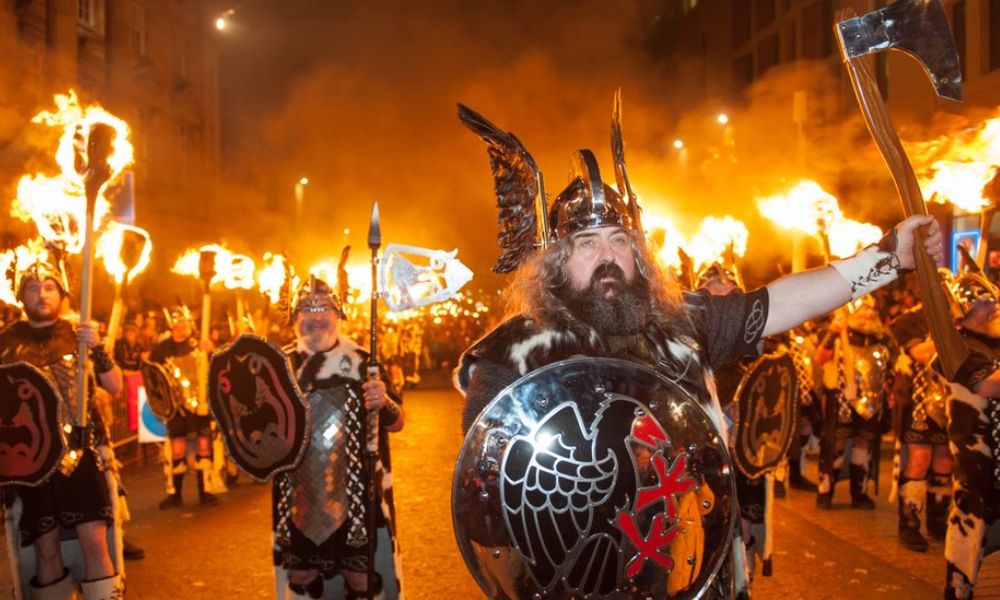
In Scotland, New Year's Eve is known as Hogmanay. A series of celebrations, including ceilidhs and Scottish delicacies like shortbread, haggis, and neeps and tatties, are held by people from near and far. Barrels of alcohol (including Scottish whisky and gin) are involved, just like at any good knees-up! The most famous Hogmanay festival in Edinburgh is hailed as the world's biggest New Year's Eve celebration. Thousands of people are accommodated for the annual street celebration, which features live performances by well-known bands and artists on several stages located throughout the city center. Every hour on the hour, the sky is painted with a brilliant fireworks show. There is a huge ceilidh in the Old Town. Crowds and groups join together around midnight to sing "Auld Lang Syne," often to the accompaniment of bagpipes, and then they rush in and out of the circle at the end of the song.
First-Footing
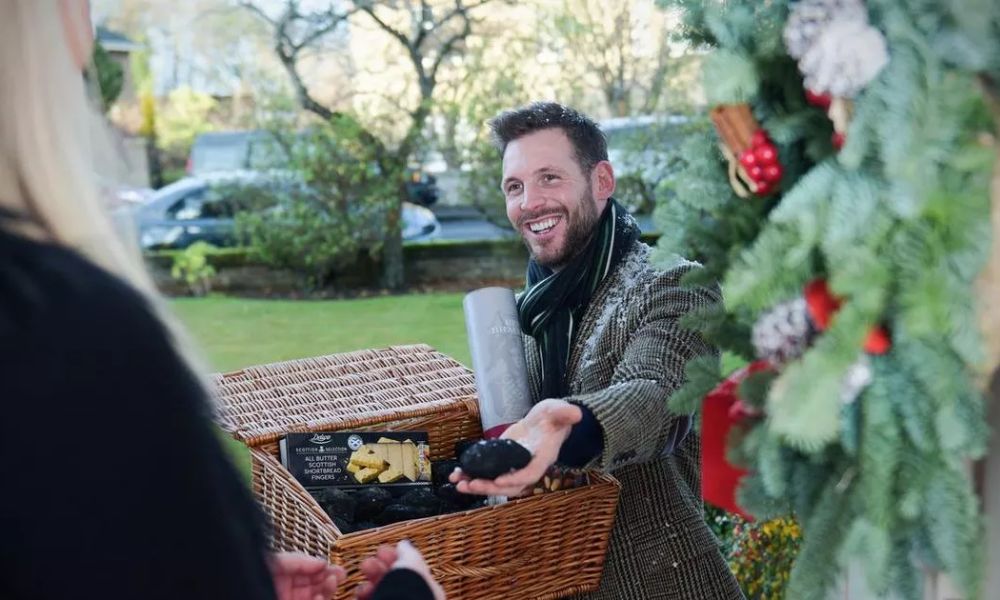
When it comes to Hogmanay, first-footing is arguably the most popular social custom associated with the holiday. People begin traveling to the houses of friends and family as the clock strikes midnight, bringing gifts and positive energy that seems to be limitless. To put it briefly, first-footing—being the first foot through the door of a loved one's home after midnight—serves to convey best wishes for the next year. Gifts are a sign of success and good fortune. They can be anything from a bottle of whisky to a tin of shortbread or anything that's leftover from the kitchen cabinet. Traditionally, someone would bring coal for warmth, a shortbread or black bun for nourishment, and salt for well-being. January is a month when many Scots first-foot friends and families due to hectic schedules and the natural ups and downs of life. According to an old wives' tale, a tall, attractive, and dashing man makes the finest first footer!
Spitting On The Heart Of Midlothian

There is a modest granite heart on the ground near St. Gile's Cathedral's west entrance in Edinburgh. If you blink, you'll probably miss it. You might not notice, but, an odd habit of people spitting on it as they walk by. Fear not—this is merely a deeply held Scottish custom, and the heart in question is The Heart of Midlothian. The location of the Old Tolbooth, a public execution site and jail entrance from the fifteenth century, is marked by this heart-shaped tile. Spitting on it started out as a way to show disrespect for the jail. Even yet, it's still frequently seen as a lucky charm nowadays.
Ba's Game
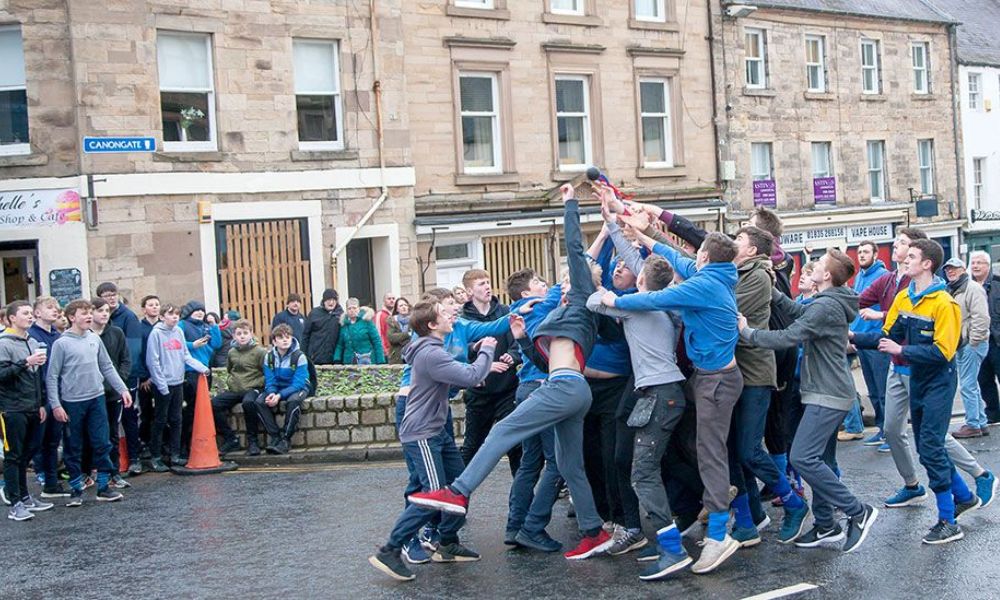
Football was preceded by the Ba' Game! Ba' Game, often known as "mob football" or medieval football, is an arduous and epic game that is still played in many Scottish communities today. Nothing is set in stone, as the Scots say. Just two teams of men, known as the doonies or uppies, based on where they were born. The object of the game is to get the ball, or ba', into the goal, which could be a wall or the harbor water! The game is self-regulating and can have as many as 350 guys participating without the need for a referee. There is a lot of communal spirit involved. Without a pause, some games can go up to five hours long. Ba' Game is usually an annual event, thus in order to prevent any damage from the massive swarm of participants desperately grabbing for the ba', communities barricade shops and structures.
Up Helly Aa
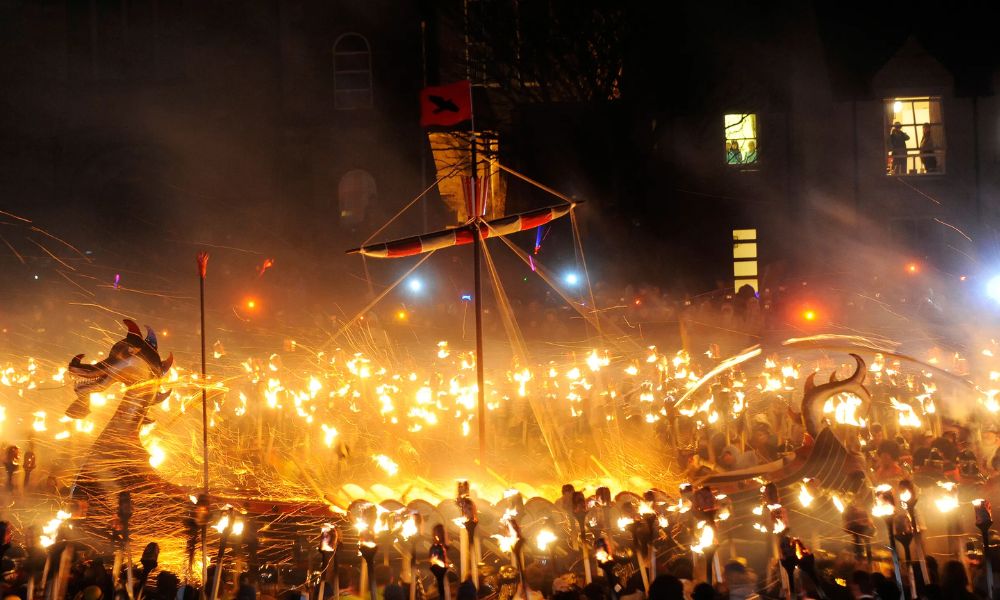
Up Helly Aa, an annual fire festival in the Shetland Islands, is a celebration of music and determined flames. This historic event, which takes place on the final Tuesday of January, revolves around the major guizer, or "Jarl," a title of great honor. An ocean of fire-drenched torches illuminates the area throughout the parade, which in Lerwick can have up to 1,000 guizers, or individuals, participating. The people's costumes range from satirical to Viking regalia. Waves of flames dramatically dance away from the model galley or Viking longship as swathes of torches encircle it after wandering through the town and the singing of the Up Helly Aa song. After that, the individual squads go to different places and put on an act, which might be anything from a pop-culture skit to singing and dancing.
Clootie Wells
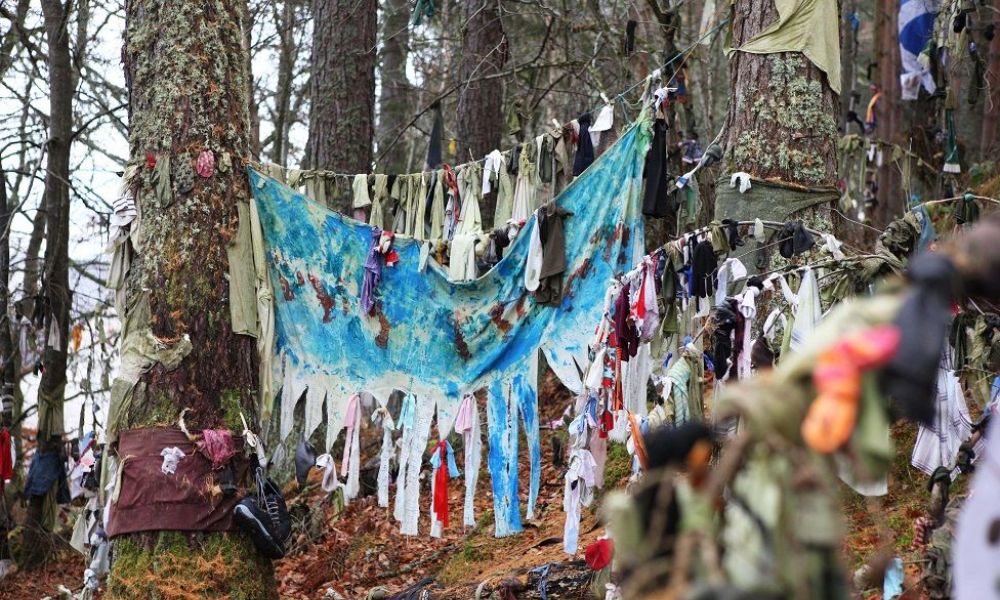
Clootie wells, an odd sight of contrasting colors, are historic pilgrimage sites with a strong Celtic heritage. These sacred springs, which are surrounded by trees, have long been used by people as locations for healing ritual sacrifices to gods, spirits, or deities. A rag or strip of fabric is called a "clootie" or "cloot" in Scots. The healing practice includes the essential step of tying clooties to tree branches. It's important to note that leaving biodegradable clothing behind is now encouraged!

